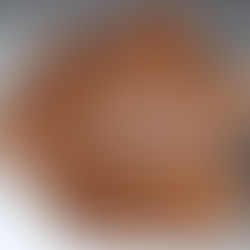Box Elder Crotch Bowls
I am finally getting back to the wood turning shop after a break after the 10 day Art Along the Lake Studio Art Tour. The good news is that I sold all but 4 bowls during the tour and had over 300 visitors to my shop. It was great meeting all these people but I got burned out after the 10 days. The pandemic added an extra stress since there was a constant concern about the Delta variant arriving in my shop. Everyone wore masks and avoided close contact and I ran my air filtration system constantly. I have now started working in the shop, turned a few commissioned bowls, and hauled out a large box elder crotch shown below. I cut it into two slabs for turning end-grain bowls. There are several ways to turn a crotch into bowls with a natural live edge. The most important thing is to capture the intersection of the branches in the bowls. This is where the most interesting grain figuring and red colors should appear. The image to the right shows this area in the two slabs.
The first bowl was turned from the slab in the top of the above right photo. The following images show how this piece was turned. Click on an image to enlarge it.
The first image shows the placement of a faceplate near the center of the slab. I chose this side of the slab to be the top of the bowl because the shape of the bark edge look the most interesting. The bark was also in better shape on this side of the slab and I wanted a bark edged bowl. An immediate issue was the soft cambium area just under the bark. This had to be stabilized with thin CA glue so the bark would remain on the bowl. This proved to be a major issue while turning the bowl since the bark had a strong wish to fly off. The second image shows the slab attached to the lathe. I always use a live center in the tailstock when possible for added safety while turning. Turning this piece was straightforward except for the issue of the soft bark. Not only needed a lot of CA glue repeatedly but had to cut a line through the bark an inch below where the natural bark edge will be. This process added a good hour to turning this bowl. The last two images show the fresh turned bowl. The figuring and colors are already very nice in this fresh turned bowl which is 16" max diameter (12" min diam) at the top and 6" deep.
The images below show the turning of the larger second slab. The first image shows the slab mounted on the lathe. You will notice the bark is gone (a command decision as my hands are still full of glue from the first bowl) and a 5.5" diam tenon has been turned in the bottom. The Stubby 1000 lathe has very flexible tool rest positions and two banjos. This really helps when turning large unsymmetrical bowls. The next images show the turning (shaping) of the bowl and the finished fresh turned bowl. Turning winged bowls like this takes patients since it involves turning a lot of air. Turning this type of bowl end-grain adds some difficulty. I could see the wings flex and distort as they got thinner. This required very careful gouge work and slower turning speeds. There are more turning marks in this bowl, but nothing what would not sand out quickly when finishing. I expect the wings to distort some during drying, a natural effect I really like. The top of this bowl measures 22" max diameter and 11" minimum diameter. It is 8" high. I will add in images of the finished (sanded/oiled/waxed) bowls in a month of two. This fresh turned bowl already shows great grain with flame (chatoyance) and good colors. These features will pop out when finished.














































Comments